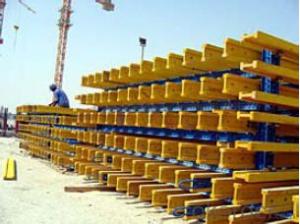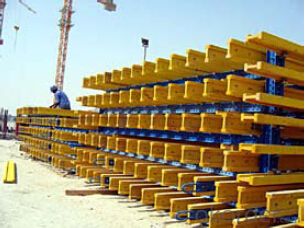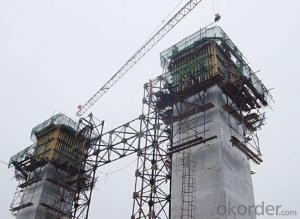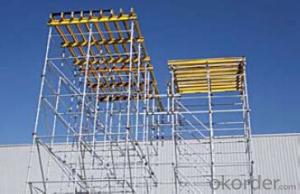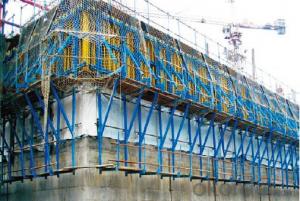Timber-beam Plywood Formwork for building Construction
- Loading Port:
- Tianjin
- Payment Terms:
- TT OR LC
- Min Order Qty:
- 50 m²
- Supply Capability:
- 1000 m²/month
OKorder Service Pledge
Quality Product, Order Online Tracking, Timely Delivery
OKorder Financial Service
Credit Rating, Credit Services, Credit Purchasing
You Might Also Like
Plywood --- make perfect concrete surface
WISA-Form Birch is a coated special plywood using in the formwork systems where high
requirements are set on the concrete surface and the times of reuses.
With CNBM timber beam & WISA plywood, the formwork is low weight but high load capacity, it is
widely used in construction.
Characteristics:
◆ Component with high standardization.
◆ Assembling in site, flexible application.
◆ Light weight, easy transportation and storage.
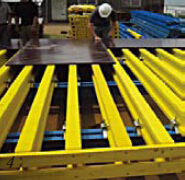

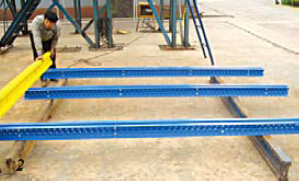
- Q: How does steel formwork affect the overall project timeline?
- Steel formwork can have a positive impact on the overall project timeline. Its durability and reusability allow for faster and more efficient construction processes, reducing the time required for formwork installation and removal. Additionally, steel formwork often requires less maintenance and repairs compared to traditional wooden formwork, minimizing potential delays caused by formwork issues.
- Q: How does steel formwork impact the overall cost of a construction project?
- Steel formwork can impact the overall cost of a construction project by increasing initial expenses due to higher material costs. However, it offers long-term cost benefits through its durability, reusability, and reduced labor requirements. The strength and stability of steel formwork result in fewer repairs and replacements, leading to decreased maintenance expenses. Additionally, its ability to be used multiple times reduces the need for purchasing new formwork for future projects, ultimately lowering overall construction costs.
- Q: What are the main components of a steel formwork system?
- The main components of a steel formwork system are the steel panels, walers, stiffeners, and connectors. 1. Steel Panels: These are the primary components of a steel formwork system. They are typically made of high-quality steel and come in various sizes and shapes. Steel panels provide the necessary strength and rigidity to hold the concrete in place during the construction process. They are designed to be easily assembled and disassembled, allowing for efficient use on different construction projects. 2. Walers: Walers are horizontal beams or rods that are used to connect and brace the steel panels. They help distribute the load of the concrete and provide additional strength to the formwork system. Walers are usually made of steel or timber and are placed along the edges of the formwork to maintain its shape and prevent any deformation. 3. Stiffeners: Stiffeners are vertical or diagonal members that are added to the steel formwork system to increase its stability and resistance to lateral forces. They are typically made of steel and are placed at regular intervals to provide additional support and prevent any buckling or twisting of the formwork system. Stiffeners are essential for ensuring the safety and integrity of the formwork during the pouring and curing of the concrete. 4. Connectors: Connectors are used to securely fasten the steel panels and other components of the formwork system. They can include various types of bolts, nuts, clamps, or pins. Connectors play a crucial role in maintaining the alignment and stability of the formwork, ensuring that it can withstand the pressure exerted by the wet concrete. They are designed to be easily adjustable and removable, allowing for quick assembly and disassembly of the formwork system. Overall, a steel formwork system is composed of steel panels, walers, stiffeners, and connectors. These components work together to provide the necessary strength, stability, and flexibility required for the construction of concrete structures. The use of steel in the formwork system ensures durability, reusability, and ease of assembly, making it a popular choice in the construction industry.
- Q: Can steel formwork be used for railway construction projects?
- Yes, steel formwork can be used for railway construction projects. Steel formwork is known for its strength, durability, and versatility, making it suitable for various construction applications, including railway projects. It can provide a sturdy and reliable support system for concrete casting, ensuring the construction of durable and long-lasting railway structures.
- Q: What are the different types of steel formwork supports?
- Construction projects commonly employ various types of steel formwork supports. The following are some notable examples: 1. Adjustable Steel Props: Vertical supports that allow for height adjustment. They consist of steel tubes with an inner and outer tube that can be adjusted effortlessly. These props are often utilized to support horizontal formwork or scaffolding systems. 2. Soldier Formwork System: This type of support involves vertical steel members known as soldiers, which are evenly spaced along the formwork. The soldiers are engineered to withstand the lateral pressure exerted by wet concrete and provide support to the formwork panels. 3. Trench Struts: Trench struts are employed to stabilize and support formwork in trenches or excavations. They comprise steel tubes with adjustable length and are typically used alongside steel walers or beams to establish a robust framework for the formwork. 4. H-Frame Systems: Vertical formwork supports often rely on H-frame systems. These systems consist of interconnected steel frames shaped like an "H" to create a stable structure. They are frequently employed to support vertical formwork panels or serve as a framework for climbing formwork systems. 5. Steel Waler: A horizontal member utilized to support formwork panels. Steel channels or beams are commonly employed to construct walers. They are used in conjunction with vertical supports such as adjustable steel props or trench struts. These examples illustrate the variety of steel formwork supports widely employed in construction. The choice of support system depends on specific project requirements, including formwork design, load capacity, and desired adjustability.
- Q: What are the different types of formwork accessories used with steel formwork?
- Steel formwork commonly utilizes various types of formwork accessories to enhance functionality, efficiency, and worker safety during construction. 1. Formwork clamps securely fasten formwork panels together, ensuring their stability and preventing movement during concrete pouring. They come in different sizes and designs to accommodate various formwork systems. 2. Formwork props are adjustable steel supports used to provide vertical stability and load-bearing capacity to formwork panels. This ensures worker safety while operating on the system. 3. Formwork ties firmly hold formwork panels in place, preventing bulging or deflection under the weight of concrete. Made of steel, they are available in different lengths and designs to meet project requirements. 4. Formwork connectors join formwork panels at corners or joints, ensuring a tight and secure fit. They come in various shapes and sizes, including corner connectors, wedge connectors, and pin connectors. 5. Formwork brackets support formwork panels horizontally, providing additional stability and reinforcement. They are commonly used in beam and slab construction to support formwork across long spans. 6. Formwork release agents are chemical substances applied to the formwork surface to prevent concrete adhesion. This allows for easy removal of the formwork after concrete curing, facilitating efficient and smooth formwork removal. In conclusion, these formwork accessories are vital for the success of a steel formwork system, providing the necessary support, stability, and reinforcement for efficient and safe construction of concrete structures.
- Q: Can steel formwork be used for both single-storey and multi-storey buildings?
- Yes, steel formwork can be used for both single-storey and multi-storey buildings. Steel formwork systems are versatile and can be easily adjusted and reused for different construction projects, including buildings of varying heights and sizes.
- Q: Can steel formwork be used for both single-storey and multi-storey structures?
- Indeed, steel formwork is suitable for both single-storey and multi-storey structures. Its versatility and durability enable it to withstand the pressures and loads typically encountered in multi-storey construction. By providing a robust and rigid framework, steel formwork facilitates the pouring of concrete, facilitating the construction of walls, columns, beams, and slabs in both single-storey and multi-storey buildings. Furthermore, steel formwork boasts numerous advantages, including ease of use, reusability, and the ability to achieve high-quality finishes, rendering it a perfect selection for diverse structure types.
- Q: What are the common safety certifications for steel formwork systems?
- Steel formwork systems can obtain various safety certifications to guarantee the highest safety and quality standards. Some of the most well-known certifications are as follows: 1. ISO 9001: This certification ensures that the manufacturer of the steel formwork system adheres to an internationally recognized quality management system. It focuses on meeting customer satisfaction, continuously improving processes, and complying with regulatory requirements. 2. OHSAS 18001: Specifically aimed at occupational health and safety management systems, this certification demonstrates that the manufacturer has implemented effective safety policies, procedures, and controls to prevent work-related injuries and illnesses. 3. CE Marking: This certification is compulsory for steel formwork systems sold in the European Union (EU) and verifies that the product meets essential health, safety, and environmental protection requirements set by EU legislation. 4. ANSI/ASSE A10.9: Developed by the American National Standards Institute (ANSI), this standard provides guidelines for the design, use, and maintenance of formwork systems, including steel formwork. Complying with this standard ensures the system's safety and suitability for construction projects. 5. UL Certification: Underwriters Laboratories (UL), a globally recognized safety certification organization, grants UL Certification to steel formwork systems that have undergone rigorous testing and meet specific safety standards. It is important to note that the required safety certifications may vary depending on the country and region. Therefore, it is recommended to consult local regulations and standards applicable to the construction project before selecting a steel formwork system.
- Q: How does steel formwork affect the overall construction material waste reduction?
- Steel formwork can significantly contribute to the reduction of construction material waste. Unlike traditional formwork materials such as timber, steel formwork is highly durable and reusable, minimizing the need for constant replacement. Its strength and longevity allow for multiple uses in various construction projects, reducing the overall consumption of materials. Additionally, steel formwork is easily adjustable and customizable, resulting in more efficient and accurate construction processes, further reducing waste. Overall, the use of steel formwork helps minimize material waste and promotes sustainable construction practices.
Send your message to us
Timber-beam Plywood Formwork for building Construction
- Loading Port:
- Tianjin
- Payment Terms:
- TT OR LC
- Min Order Qty:
- 50 m²
- Supply Capability:
- 1000 m²/month
OKorder Service Pledge
Quality Product, Order Online Tracking, Timely Delivery
OKorder Financial Service
Credit Rating, Credit Services, Credit Purchasing
Similar products
Hot products
Hot Searches
Related keywords

